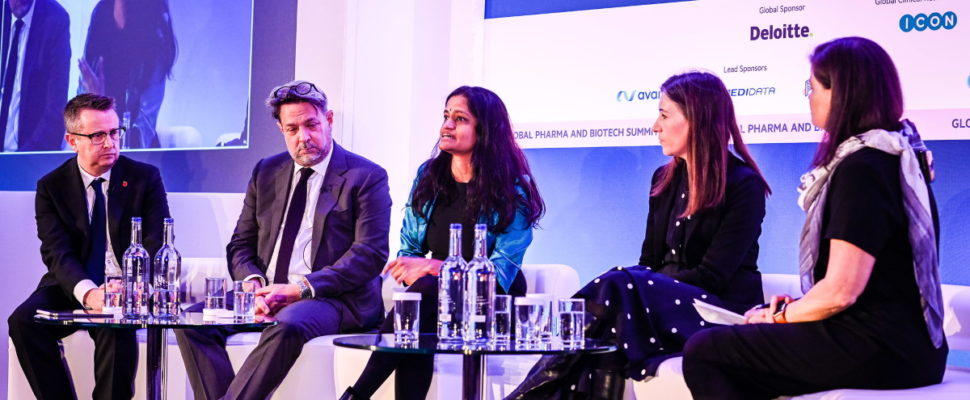Pricing and market access have become increasingly hot topics in recent years, as healthcare systems across the world attempt to balance their own financial sustainability with securing the latest medical innovations and the premium costs associated with them. Health inequity and access disparities exist between both rich and developing countries, as well as within both, while the emergence of high-cost advanced cell and gene therapies is posing new questions around access and affordability.
Speaking at the FT Global Pharma & Biotech Summit last week, a panel led by Vicky Levy, global life sciences sector leader at Deloitte, and including AstraZeneca’s global pricing lead Ana Plata, Richard Saynor from generics giant Sandoz, Richard Torbett of the Association of the British Pharmaceutical Industry (ABPI), and Jayasree K. Iyer representing the Access to Medicine Foundation, weighed in on the key global pricing and market access trends today and the gaps that need to be addressed to ensure broader patient access across the world.
Value-Based Pricing
Asked about which emerging pricing and market access trends stand to have the biggest impact, Plata pointed to an increased focus on clinical differentiation, noting that the COVID-19 pandemic had led to a greater openness among payers to discuss the holistic values of medicines. She also highlighted an increasing reliance on value-based agreements. These agreements offer a level of insurance to payers when bringing high-cost new therapies to market in that full payment is contingent on therapeutic success. Although such agreements make up only a small percentage of the current total, Plata was optimistic that their encouraging results would lead to further uptake.
However, the ABPI’s Torbett warned that we are only “at the foothills” of value-based pricing, and that only now is sufficient technology and data capture coming online to facilitate value-based agreements.
Plata added that while value-based pricing is clearly the future, there needs to be a common definition of “value” between regulators and payers and across borders. The varying health technology assessment (HTA) approaches currently being utilised to define measure, and reward value are holding back the future progress of this field, she stated.
Global Inequity
Iyer, whose foundation has just released its 2022 Access to Medicine Index, noted that post-COVID, more pharma companies are focusing strategically on expanding access in emerging markets. She asserted that stakeholders from both the public and private sectors are demanding change on unacceptable differences in availability between rich and poor countries, and that the rollout of universal healthcare systems and regulatory harmonisation frameworks bode well for closing this access gap even further.
However, Iyer cautioned that the scale of this problem is still huge. The policy environment is challenging and innovator companies are not engaging early enough in the drug development and launch process to make sure their products are eventually available in low-income countries. She continued that access planning needs to be built into this process early on and that the generics industry can also be engaged much earlier on pre-agreement of licenses to speed up access.
Iyer also called for more companies to put targets on access in low-income countries, linking it to executive remuneration and spreading legal and financial risk based on sustainability-linked bonds as Novartis and Teva have done.
Saynor added that access battles are not limited to emerging markets alone. “A lot of my access battles are still in what we would call high-income regulated markets” like the US, he claimed. Sandoz sales amount to USD 1.5 billion but gross sales total over 10 billion, meaning that middlemen such as pharmacy benefit managers (PBMs) rather than Sandoz itself or patients are making USD 8.5 billion extra and thereby driving prices sky-high.
Advanced Therapies
On advanced cell and gene therapies, the ABPI’s Torbett was keen that they are seen as “pieces of capital investment” involving high one-off costs but long-term benefits, “a world away from a daily pill in a blister pack.” Torbett called for creativity in how these products are priced and paid for to ensure a fair return to their developers commensurate with their value to patients, but remaining manageable for healthcare systems.
The UK, unlike France, does not currently have a novel payment mechanism for cell and gene therapies in place and sees the NHS paying for the entirety of these products’ value upfront. However, Torbett feels that this is unsustainable as greater and greater amounts of cell and gene therapies come online.
Questioned on the progress of advanced therapies in developing countries, Iyer submitted that some companies were expanding patient access in areas like cardiovascular disease, oncology, and infectious diseases; initiatives which could eventually be extended to advanced therapies in time.


